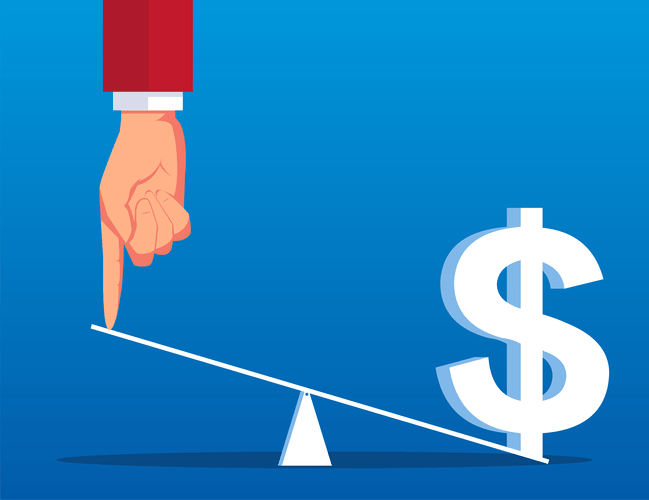Accounts Receivable Control Account

Invoices that have been created, customer payments, product returns, refunds, and credit memos posted in the various accounts receivable ledgers will all be included in the accounts receivable control account. Control accounts work as a summary account, presenting the balance of the subsidiary accounts without including the transaction details. Companies using a control account typically post balances from the subsidiary ledgers daily to make sure that they’re always in balance. However, if you’re still using a manual ledger system, the purpose of control accounts is to take the balance of the accounts in the subsidiary ledgers and post the total into the general ledger. Doing this allows you to produce a trial balance and balance sheet without all of the transactions displayed. Control accounts are usually maintained by large organizations because of a high volume of transactions.
Control Account in Project Management: Example & How to Measure
Control accounts are an important component of double-entry accounting and make up the foundation of the general ledger. They serve as a summary report of the total balances for each subledger, and allow for a streamlined analysis of a company’s balance sheet without all of the clunky details contained in each subledger. They show the balance of transactions detailed in the corresponding subsidiary account.
Advantages of Control Accounts
- Used with subsidiary accounts, your control balance should always be equal to the balance in the control account.
- If the company defaults on its loans, its lender may foreclose on these assets to help recoup the debt.
- Accurate and transparent financial reports, backed by properly maintained control accounts, help to provide such assurance.
- Unlike installment loans, you can choose the payment amount for your revolving credit, as long as it’s at least the minimum.
- Implementing control accounts can be complex, particularly in large organizations with diverse operations.
- The next main type of accounts receivable transaction is the receipt of cash from the customer for the outstanding invoice.
- Invoices that have been created, customer payments, product returns, refunds, and credit memos posted in the various accounts receivable ledgers will all be included in the accounts receivable control account.
This section will look at the transactions for Fooz Ball Town and how to post to subsidiary ledgers for accounts receivable and accounts payable. Control accounts help project managers track costs and add earning rules to be applied for earned value analysis. They offer chargeback mechanisms for project-level tasks, activities, and resources to assess progress https://www.bookstime.com/ and track performance while reducing the PM’s efforts in managing finer project details. Besides this, control accounts help confirm reconciliation mechanisms for differences in the account balances as per periods. With double-entry accounting systems, accounts receivable and accounts payable are the most most common types of control accounts.

Control Account and the Double Entry System
A general ledger involves a record of the entire past transactions in the business. The subsidiary ledger contains both the creditor and debit account used to enter separate entries. A subsidiary ledger deals with the storage of the information for the general ledger account, so it provides a tool for reconciliation between the general ledger and the journal entries.

The sales invoice acts as the original accounting source document for the transaction. For example, two invoices might be generated, one to customer A for 500, and a second to customer B for 300. Check your understanding of this lesson by taking the quiz in the Test Yourself! And right at the bottom of the page, you can find plenty more questions on control accounts submitted by fellow students.
Frequently asked questions (FAQs)
The details of a control account will be found in a corresponding subsidiary ledger. The control account keeps the general ledger clean of details, but contains the correct balances used for preparing a company’s financial statements. Control accounts also underpin sustainability by supporting strategic financial planning. The regular reconciliation of control accounts provides timely and accurate financial data, which aids management in making informed decisions about the company’s future direction. This forward-focused, proactive approach ensures that the organization remains financially healthy and agile, further contributing to its overall sustainability. Accounts Receivable refers to the money owed to a business by its clients or customers for goods or services provided on credit.
A control account in PMP, abbreviated as CA, helps build a strategic structure by creating a point of intersection for the project constraints, i.e., scope, time, and cost, to come together. The control accounts are positioned in control account example the WBS at points that help fulfill project measurement and define criteria for tracking the constraints. They help reconcile gaps or loopholes at the intersection points to minimize variances and enable strategic alignment.
It is very important to note that a control account can have multiple work packages under it, while a work package will be under one and only one control account. This helps create a structure where items are monitored from the bottom of the project, building activity and assignment-based control processes. Imagine you shop monthly for groceries at a hypermarket, and even before you get there, you plan a specific category of items and allocate a budget according to your needs.
What is revolving credit?
This type of visibility encourages openness and reduces the chance of misunderstandings or miscommunications about the company’s financial health. Another distinct advantage of having a control ledger is the ability to prevent fraud. The subsidiary accounts can be managed by one person, while the control is managed by another. Using a control account can guard against fraud, particularly if you have someone else maintain the control account. Each party’s total is accumulated at one place, and a certain balance is calculated to be used in the trial balance for the formation of financial statements.
If at any time the control account and the subsidiary ledger are not in balance, the subsidiary ledger will need to be reconciled to locate and correct the error. A control account works as an adjusting and controlling account that summarizes and sums up balances of all subsidiary accounts’ information of a specific account type in a general ledger. Subsidiary accounts are used to provide support and detailed information on a related account type.

